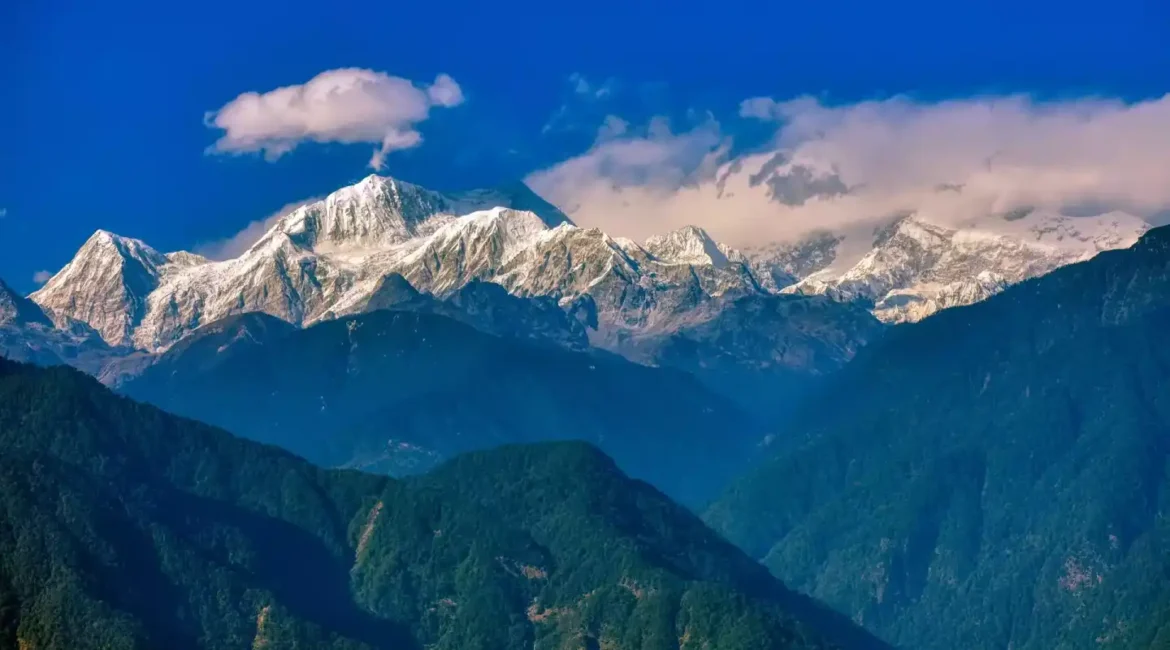Discovering South Sikkim: A Comprehensive Guide
Introduction
South Sikkim, a district in the northeastern Indian state of Sikkim, is a blend of breathtaking natural beauty, rich cultural heritage, and historical significance. Nestled in the Eastern Himalayas, South Sikkim offers a serene escape from the bustling city life. This article delves into the district's geography, culture, cuisine, history, notable figures, and administrative setup, providing a detailed overview of what makes South Sikkim a unique destination.
Geography of South Sikkim
Location and Landscape
South Sikkim is located between the districts of West Sikkim and East Sikkim. The district is characterized by its rolling hills, deep valleys, and lush greenery. It spans an area of approximately 750 square kilometers and is situated at an elevation ranging from 300 meters to 2,300 meters above sea level.
Climate and Best Time to Visit
The climate in South Sikkim varies with altitude. Lower regions experience a subtropical climate, while higher altitudes have a temperate climate. The best time to visit South Sikkim is from March to June and September to December, when the weather is pleasant and conducive for sightseeing and outdoor activities.
Cultural Heritage
Demography and Ethnicity
South Sikkim is home to a diverse population comprising mainly of Nepali, Bhutia, and Lepcha communities. Each ethnic group contributes to the rich cultural tapestry of the district. The population is predominantly Hindu and Buddhist, with various festivals and traditions celebrated throughout the year.
Festivals and Traditions
Key festivals include:
- Losar: The Tibetan New Year, celebrated with traditional music, dance, and feasts.
- Dashain: A major Hindu festival marked by elaborate rituals and family gatherings.
- Saga Dawa: A significant Buddhist festival commemorating the birth, enlightenment, and death of Buddha.
These festivals are celebrated with great enthusiasm, showcasing the district's vibrant cultural life.
Historical Significance
Ancient and Medieval History
South Sikkim has a rich historical background. It was once part of the Kingdom of Sikkim, which was established in the 17th century. The region has seen various dynasties and rulers, each leaving their mark on its history and culture.
Colonial Era and Modern History
During the British colonial period, South Sikkim served as an important trade route between India and Tibet. Post-independence, Sikkim merged with India in 1975, and South Sikkim has since evolved into a significant administrative and cultural hub.
Major Attractions
Temi Tea Garden
The Temi Tea Garden is the only tea estate in Sikkim and is renowned for its organic tea. Spread over 440 acres, the garden offers picturesque views and a glimpse into tea production. Visitors can enjoy tea-tasting sessions and guided tours of the estate.
Samdruptse Hill
Samdruptse Hill, meaning "The Wish Fulfilling Hill," is home to a massive statue of Guru Padmasambhava, the patron saint of Sikkim. The 45-meter tall statue is a major pilgrimage site and offers panoramic views of the surrounding mountains and valleys.
Ravangla
Ravangla is a small town known for its scenic beauty and peaceful ambiance. Key attractions include the Buddha Park, featuring a 130-foot statue of Buddha, and Ralang Monastery, an important center for Buddhist learning.
Cuisine of South Sikkim
Traditional Dishes
South Sikkim's cuisine is a delightful blend of Nepali, Tibetan, and local Sikkimese flavors. Popular dishes include:
- Momo: Steamed dumplings filled with vegetables or meat.
- Thukpa: A hearty noodle soup with vegetables or meat.
- Phagshapa: A spicy pork dish cooked with radishes and chilies.
Local Beverages
Chhang, a traditional fermented millet drink, is a local favorite. It is often consumed during festivals and social gatherings, offering a unique taste of the region's culinary heritage.
Notable Figures
Guru Padmasambhava
Guru Padmasambhava, also known as Guru Rinpoche, is a revered figure in Sikkimese culture. He is credited with spreading Buddhism in the region and is honored with numerous statues and monasteries, including the one on Samdruptse Hill.
Other Prominent Personalities
The district has produced several notable figures in politics, arts, and culture, contributing significantly to the state's development and cultural richness.
Administrative Setup
District Administration
South Sikkim is administratively divided into several subdivisions and blocks. The district headquarters is located in Namchi, which serves as the central hub for governmental and administrative activities.
Infrastructure and Development
South Sikkim has seen significant infrastructure development in recent years, with improvements in road connectivity, healthcare facilities, and educational institutions. The Namchi Skywalk, a recent addition, is a testament to the district's growing tourism infrastructure.
Suggested Diagram
Conclusion
South Sikkim, with its stunning landscapes, rich cultural heritage, and historical significance, offers a unique blend of natural beauty and cultural depth. Whether exploring its serene tea gardens, partaking in vibrant festivals, or delving into its historical past, South Sikkim provides an enriching experience for every visitor. As the district continues to develop and modernize, it remains a testament to the harmonious coexistence of tradition and progress.
